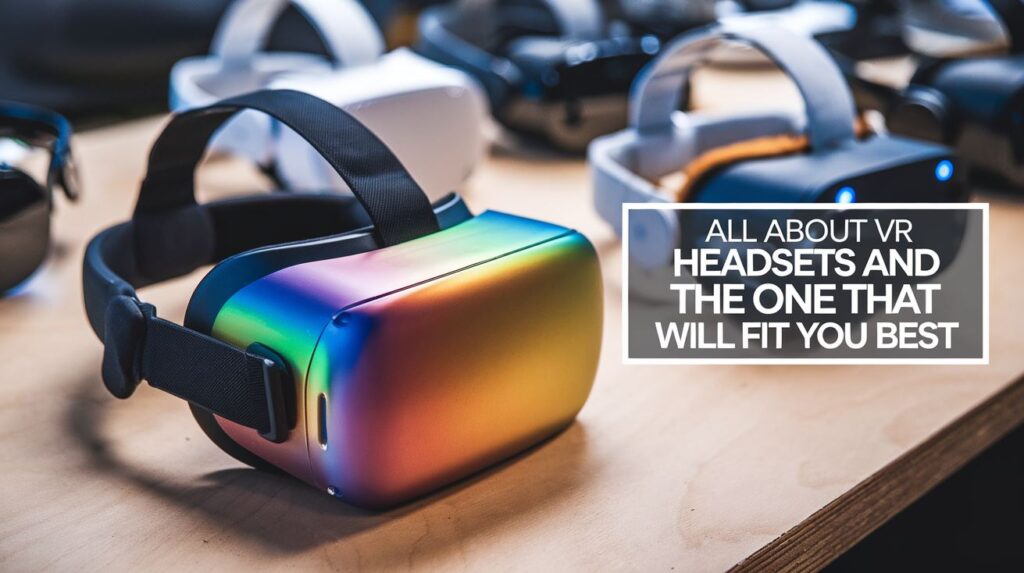The technology behind virtual reality isn’t something that is light-years away anymore. It is here now and it is changing how we interact, work, or even play. Are you into gaming, looking to discover new virtual worlds, or want to break a sweat? Don’t worry, there is a headset specially designed for each of the activities above. Even though the vast number of choices available in a single market can be overwhelming, one should know for which purpose the headset is being used. Do you want to go for the ultra-realistic graphics, or do you want ease of use with a wireless option? If you are looking for a simple approach to VR, you won’t have to break the bank either. In any case, being informed about the use of a headset and knowing the different types of VR headsets available and all the features will aid you in making a well-informed decision.
The types of VR headsets and their functions
There is a difference in the functionality of various VR headsets and your VR experience will determine which is best suited for you. Tethered headsets, Valve’s Index and the PlayStation VR2, are the most powerful since they are connected to a gaming PC or a console, This allows them to provide the best graphics and super smooth tracking. These types of headsets do have a significant flaw, which are the cables that need to be connected. Nevertheless, if you are looking for the most immersive VR experience out there, then feel free to plug in. Standalone headsets such as the Meta Quest 3, tend to have more limitations in terms of power, but they do offer a lot of freedom. You can use the Quest 3 without any PC or console, making them wireless and easy to set up. These types of headsets are great for casual gaming, VR social apps, or even fitness which makes them perfect for casual usage.
What can you actually do with a VR headset?
Before buying a headset, make sure it actually supports the games and apps you want to use. PlayStation VR2 is locked into the PlayStation ecosystem, while PC-based headsets give you access to a huge library of SteamVR games. Standalone models like the Meta Quest 3 have their own app store, with a mix of games, fitness apps, and social VR experiences. Want the widest variety of VR content? PC-based VR headsets usually give you the most options, but standalone headsets are catching up fast.
What’s the best option?
Wireless VR is the future, and nobody likes tripping over cables while dodging virtual enemies. Standalone headsets are completely wireless, but even PC-based headsets are starting to offer wireless streaming, meaning you can play high-end VR games without being physically tethered to your PC. The only downside is that you need a strong Wi-Fi connection, and some people notice a bit of lag. If you want zero latency and the best performance possible, sticking with a wired headset is still the safest bet.
What to expect in the next years
VR is a rapidly changing space, and some of the new tech coming is downright exciting. Eye tracking: headsets will track where your eyes are gazing and automatically adjust focus accordingly, allowing for smoother and more realistic interactions. Haptic feedback gloves are being developed, giving you the ability to “feel” objects in VR. And AR (augmented reality) is also merging with VR, so future headsets may allow you to mix the real and virtual elements seamlessly. Put simply, VR is entering a period of rapid evolution, and if you’re concerned about buying something obsolete, you shouldn’t be, there’s still plenty of time before the next big jump takes place.
Here’s what you need to know about VR headsets and which one is right for you
Virtual reality has moved from being a futuristic fantasy to a technology that is becoming increasingly commonplace (at least in the gaming, entertainment, and even work applications). When you wear a VR headset, you step into a new world, whether you’re gaming watching a movie, or joining a meeting. It is no longer a question of whether VR is worth it, but rather which headset you should buy. There are several types of VR headsets available, each with pros and cons. Pick the model that fits your needs based on your budget, expected usage, and result.

